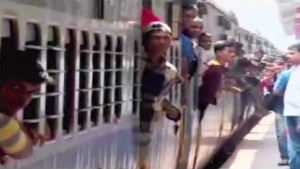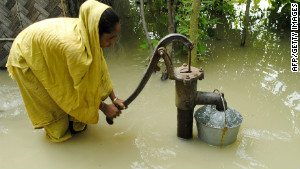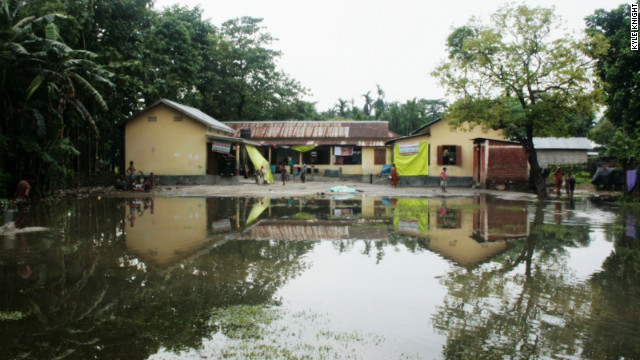October 5, 2012 -- Updated 0757 GMT (1557 HKT)
STORY HIGHLIGHTS
- 300,000 people fled villages in Assam after ethnic tension and riots
- Displaced people stay in schools, forcing cancellation of classes
- Students are upset about inability to continue classes
Suddenly, his village
came under attack. Men wielding guns, fired shots into the air and
torched houses including his. Kuddus and his family ran to the forest
and waited for the attackers to leave, watching their village burn to
the ground.
"As we left the village later, I saw the school where I taught," said Kuddus. "It was also gone -- burned."
More than 300,000 people,
including Kuddus and his family, fled the riots that lasted for two
weeks and burned their villages in western Assam.
The riots started after
the killings of two Muslims and four Bodos, a politically powerful
tribal group in Assam, that heightened tensions between the two groups,
according to local news reports and a human rights report. While the
July riots were not the first violent incidents in Assam, the subsequent
displacement is being called the biggest since India's independence.
Many residents scattered
in search of safety and fled to relief camps set up in schools in
neighboring communities. As a result, the start of the academic year for
tens of thousands of students has been canceled as classrooms became
dormitories for the displaced.

Social media threat causes panic in India

India battles crippling floods
"My students left for a
one-month summer holiday on July 1," said Munir Islam, a principal whose
school is a relief camp. "They never came back."
Two months after the
riots, hundreds of schools remain relief camps. Both the local people
and the displaced are feeling the pressure.
The Basugaon Higher
Secondary School in Assam's Chirang district, enrolled 1,300 students
and now houses more than 6,000 people. In early September, local
students held a rally demanding that their school re-open, said Subal
Roy, the principal.
Even during the protest, Roy said, "No one had an answer for how to get these people back to their villages safely."
Ali Mohammed, a father of four, has lived in a relief camp at nearby Motilal Bogoria School for two months.
"The local people
complain that their school is being used for the camp," he said. He
worried about the disruptions in his children's lives, but did not think
it was safe to return to their village yet.
"Look at this
situation," he said, gesturing at a group of children splashing through a
puddle with garbage floating in it. "Why would we want to stay here?
"It makes us feel bad to take the school from other people -- but where do we go?" he asked.
His 14-year-old son
Ahmed added: "We are using this school for a living place, not a school.
We live in uncertainty day to day, just surviving here."
Experts are concerned that a gap in schooling could have immediate and long-term effects on children.
"Even if education is
interrupted for just a few months, it can be difficult to get children
back into schools," said Rebecca Winthrop, director of the Center for
Universal Education at the Brookings Institute in Washington, D.C. "Just
a daily gathering of teachers and students to read together or discuss
the fragile situation around them -- this sense of regularity helps."
Some schools have begun
to improvise. At the Lakhiganj Higher Secondary School, administrators
set up alternative sites for classes to take place. Some students have
classes in a local sports club building, a small concrete structure near
the school campus. When the monsoon rains stop and the ground dries,
administrators said they plan to hold classes in nearby fields.
But the alternative facilities are not an ideal substitute.
"There is no academic
atmosphere," said teacher Rofyul Sheik, as he stood next to his corroded
chalkboard in a small thatched building as the ceiling drooped in over
his head. "The students get distracted."
Observers say continuous education is crucial for the future stability of the region.
"Delaying the education
of a student in a village because some other people burned it down --
the child will remember that. It will inform his politics for the rest
of his life," said Berlao Karjie, professor of political science at
Kokrajhar Government College.
"The memory of your school being taken over by desperate people fleeing violence can have a similar effect," he said.
Monirul Hussein, head of
the political science department at Gauhati University in Assam's
capital, said: "Education is the only hope for children to have a
future, especially if their family's land is getting squeezed."
The July violence
fomented amid the long history of political tension and land disputes in
Assam. For decades, indigenous people, most prominently the Bodo tribe,
have fought for autonomy. Bodos were granted territorial and political
sub-autonomy by the Indian government in 2003. Since then, Muslims in
the area claim they have been pushed off the land.
The local issues in Assam have become touchstones for political debates across India.
"We have failed as a state to manage our diversity," said Hussein.
A recent report on the
violence by the Delhi-based Asian Centre for Human Rights claims that a
lack of political will to intervene allowed the July riots to take place
and that this permits the suffering of students to continue.
"What we're seeing now
in the government's lack of action on the education issue is the same
kind of negligence," said Suhas Chakma, the center's director.
About 200,000 people
remain in the cramped relief camps. Most are Muslim families; some are
undergoing verification to prove they are Indian citizens, which could
take months since many lost documents in their scorched homes.
Unavailable to speak
with CNN, Assam's education minister stated in late August that schools
must re-open, but no official decision has been implemented.


No comments:
Post a Comment